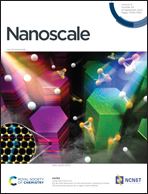Cation-exchange construction of ZnSe/Sb2Se3 hollow microspheres coated by nitrogen-doped carbon with enhanced sodium ion storage capability†
Abstract
Recently, anode materials with synergistic sodium storage mechanisms of conversion combined with alloying reactions for sodium ion batteries (SIBs) have received widespread attention due to their high theoretical capacities. In this work, through reacting with an appropriate concentration of Sb3+ ions and a simple carbonization process, hollow ZnSe/Sb2Se3 microspheres encapsulated in nitrogen-doped carbon (ZnSe/Sb2Se3@NC) are progressively synthesized based on a cation-exchange reaction, using polydopamine-coated ZnSe (ZnSe@PDA) microspheres as the precursor. Benefiting from the synergistic effects between the unique structure and composition characteristics, when serving as an anode material for SIBs, they result in higher sodium diffusion coefficients (8.7 × 10−13–3.98 × 10−9 cm2 s−1) and ultrafast pseudocapacitive sodium storage capability. Compared with ZnSe@NC and Sb2Se3@NCs exhibit, ZnSe/Sb2Se3@NC exhibits more stable capacity (438 mA h g−1 at a current of 0.5 A g−1 after 120 cycles) and superior rate performance (316 mA h g−1 at 10.0 A g−1). Our work provides a convenient method to construct high performance anodes with tunable composition and structure for energy storage.



 Please wait while we load your content...
Please wait while we load your content...